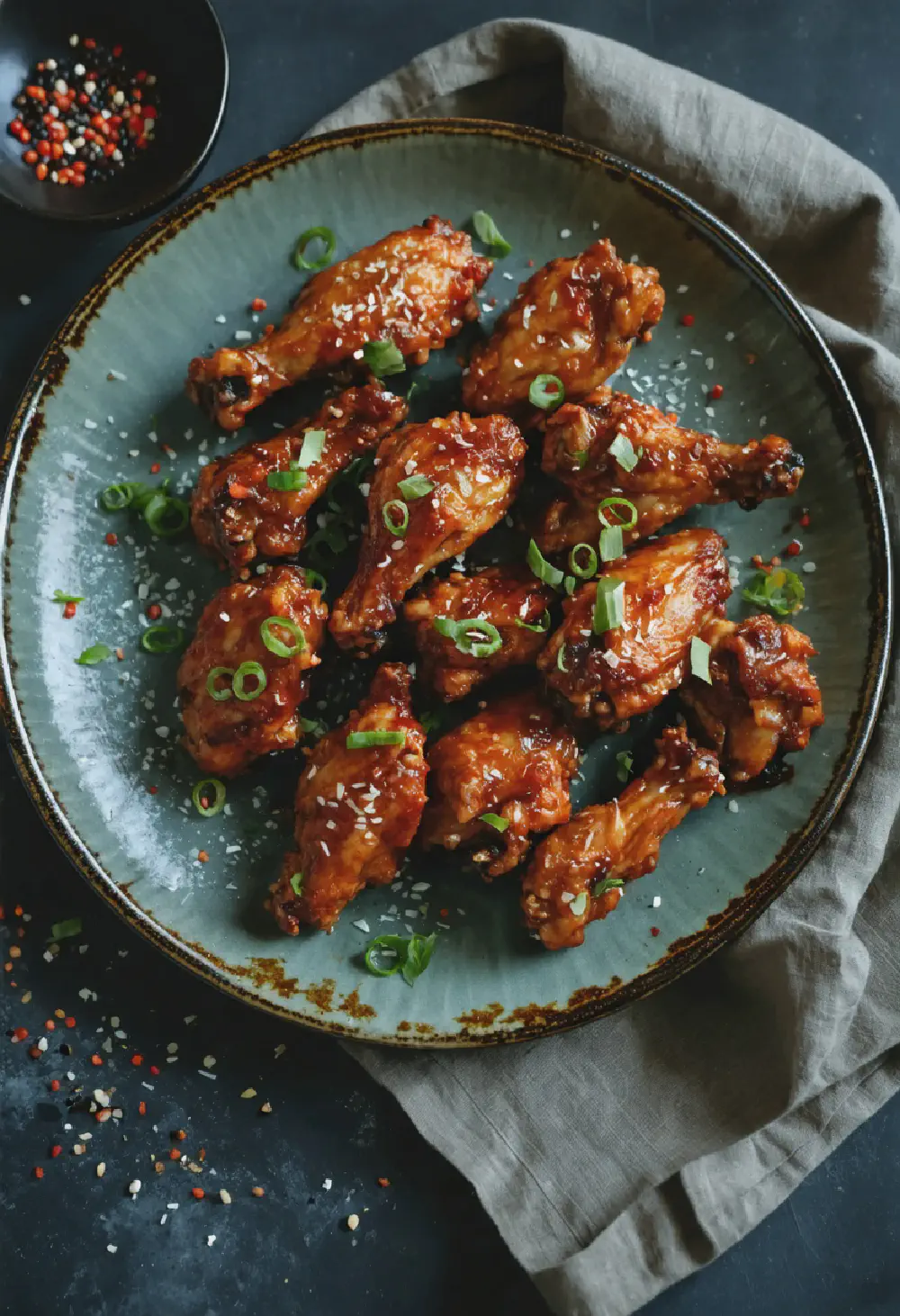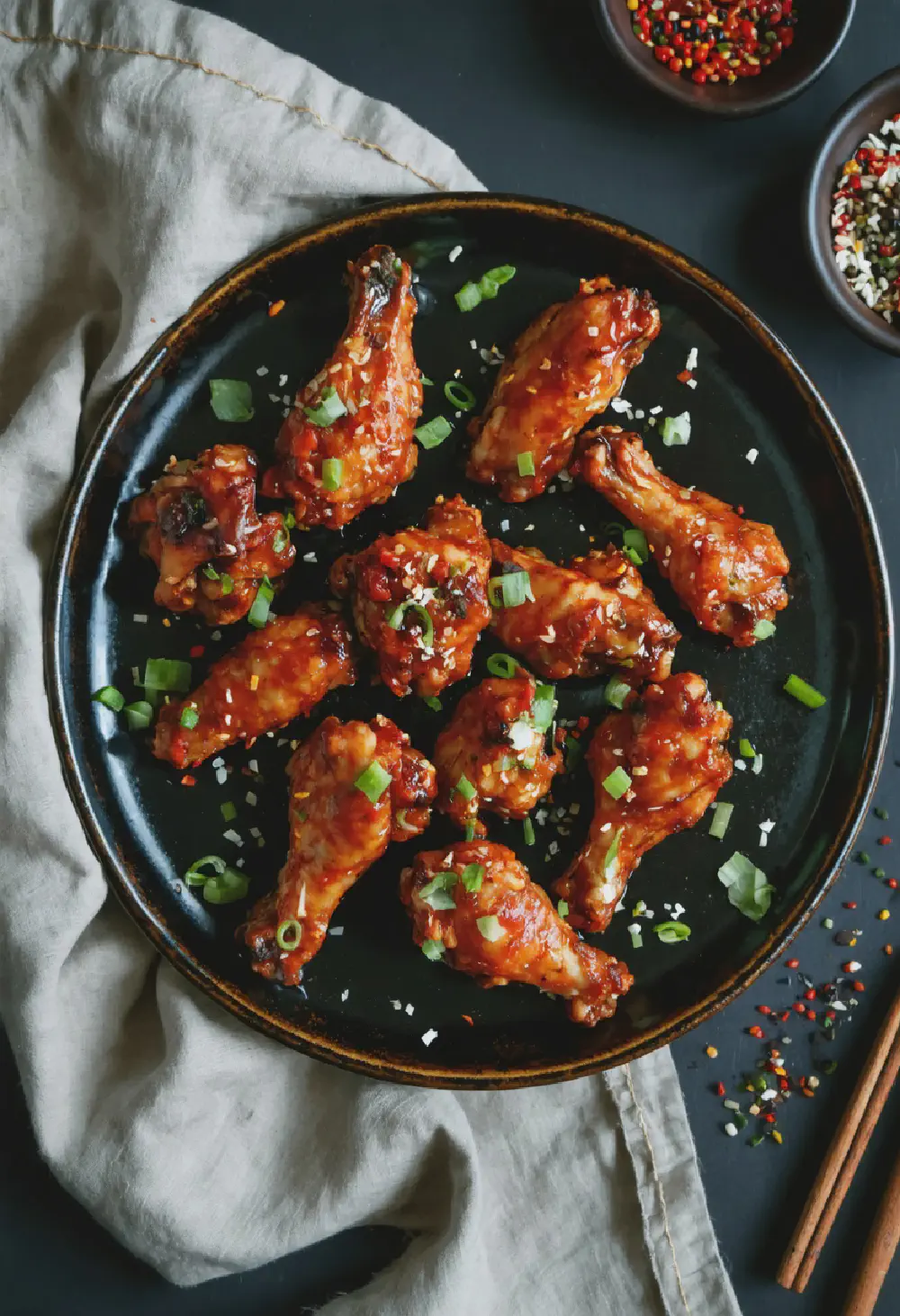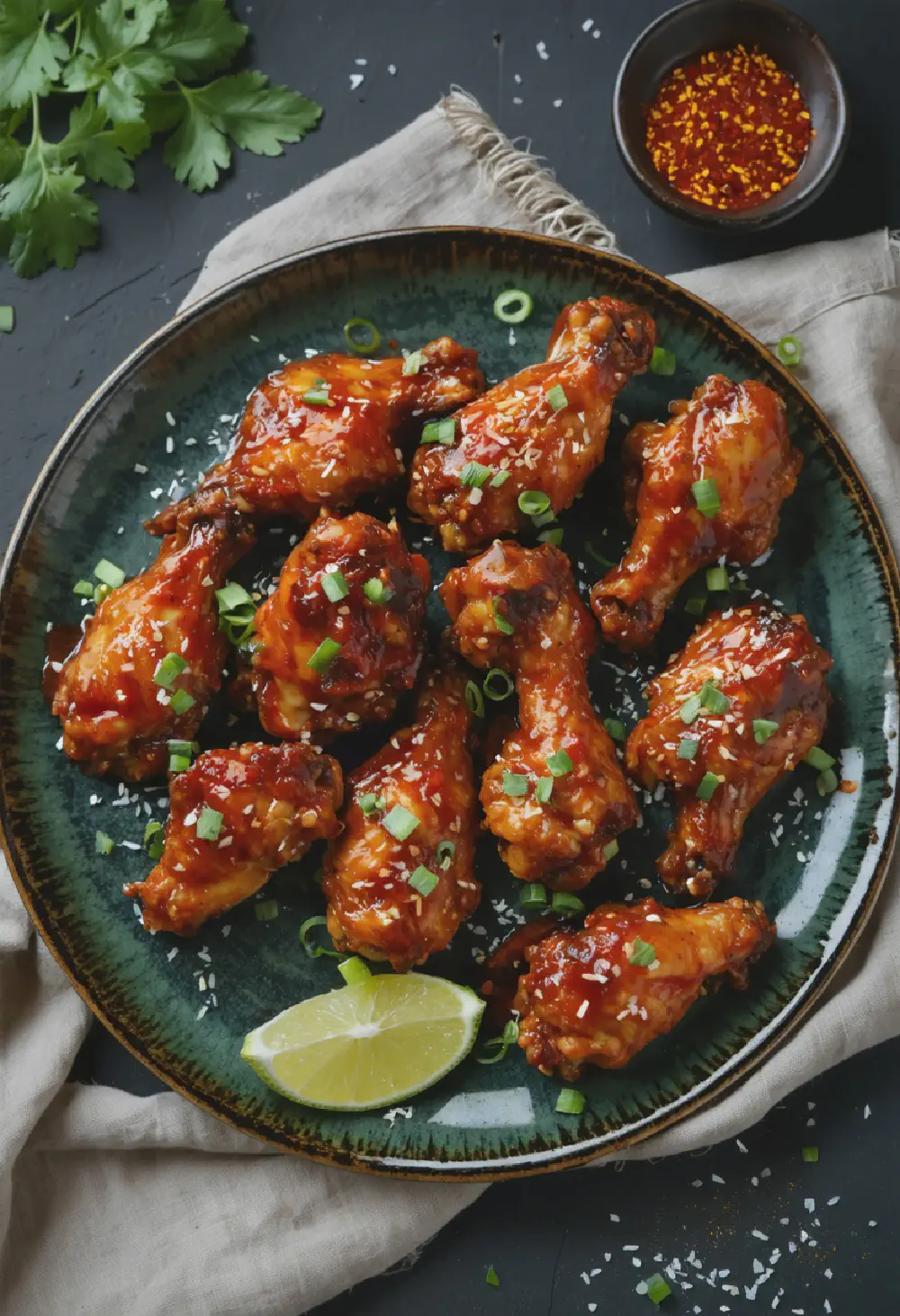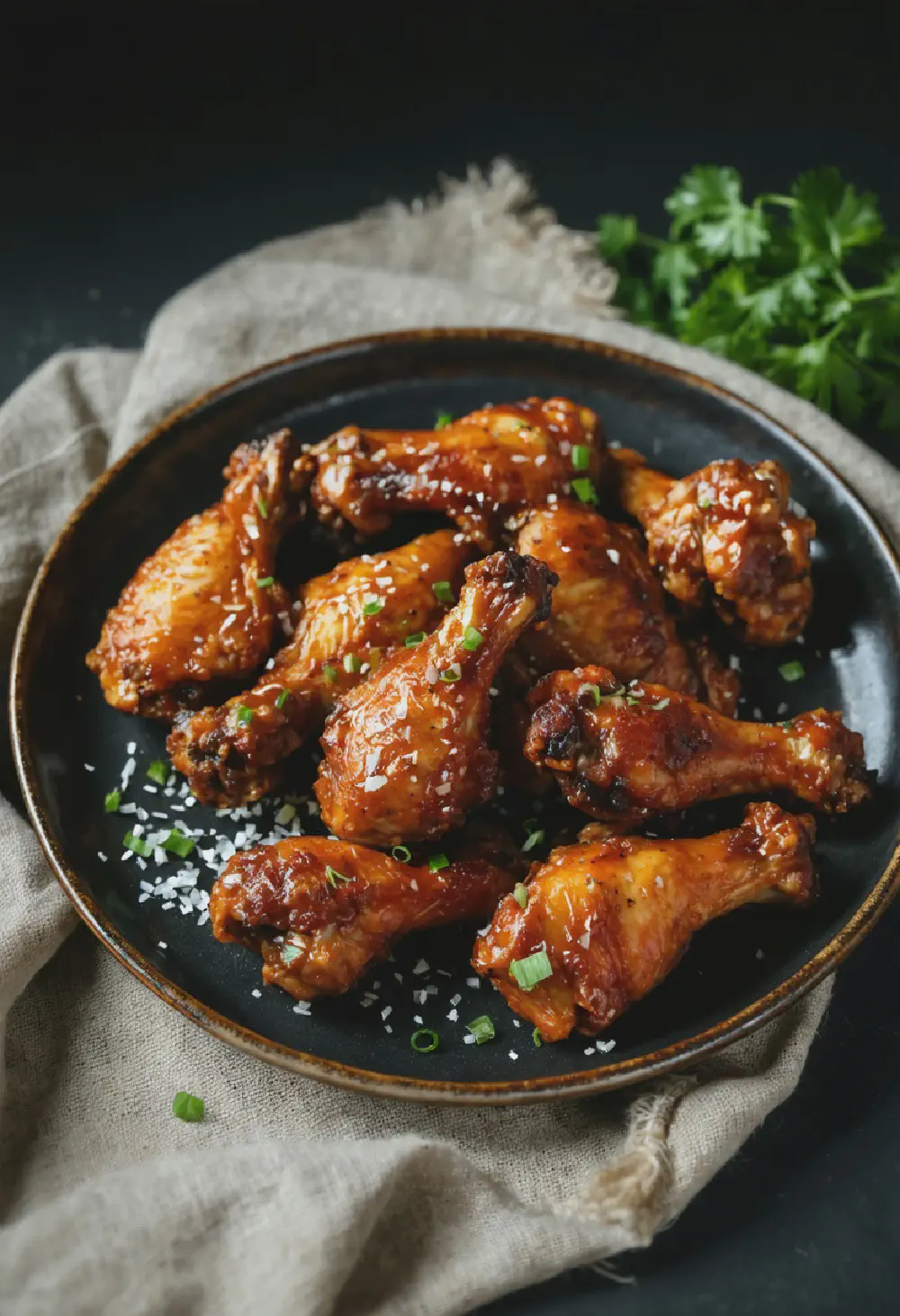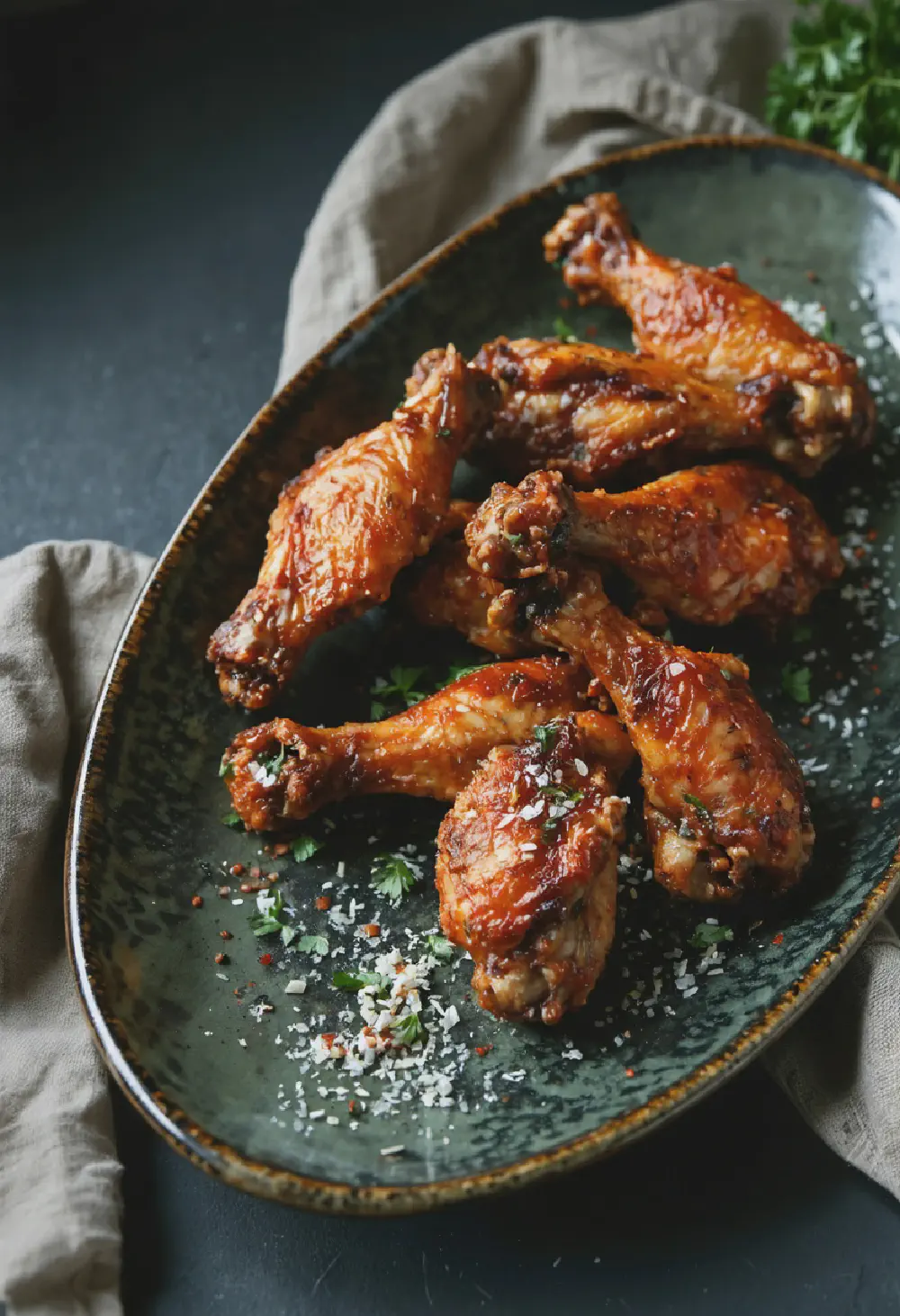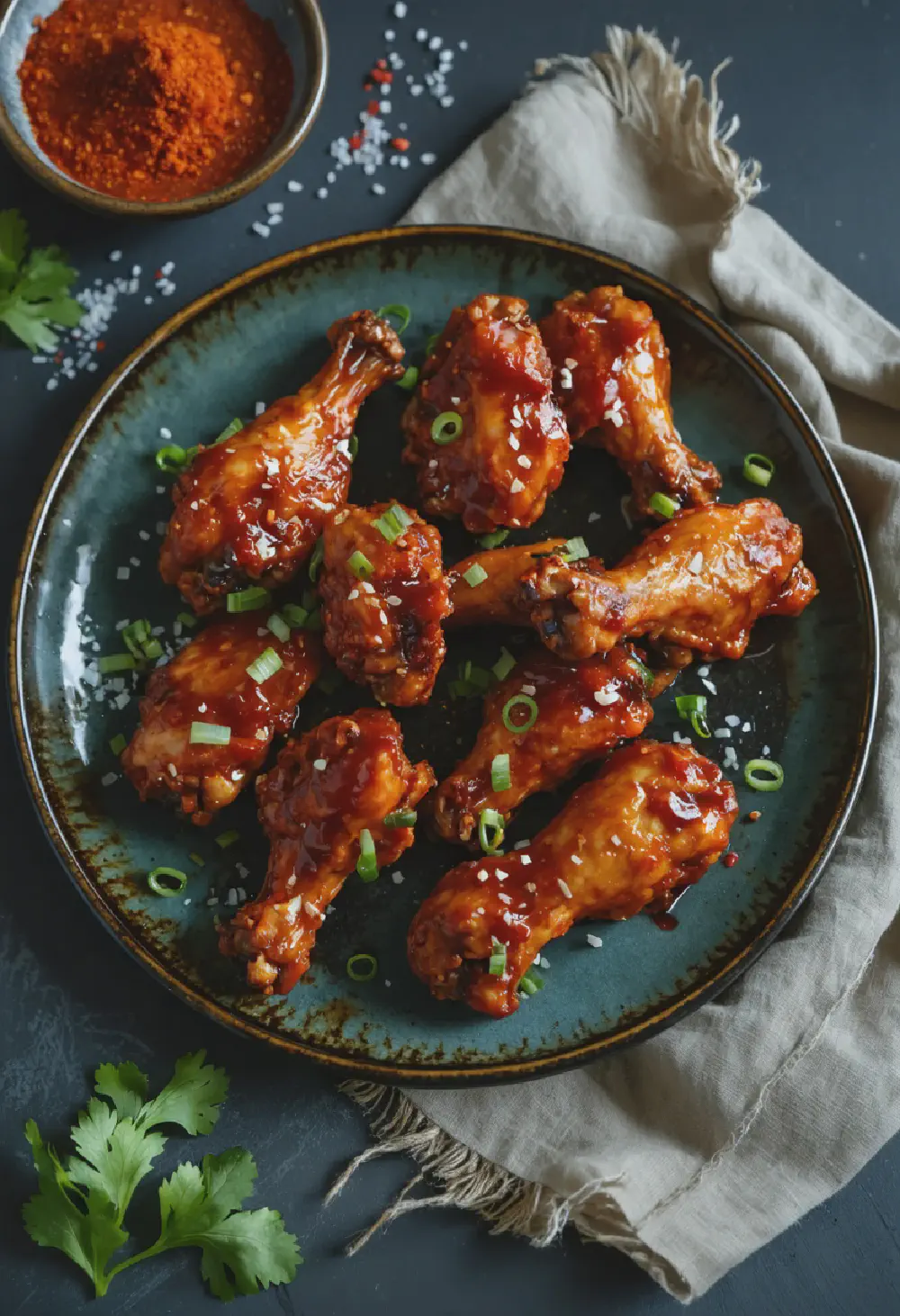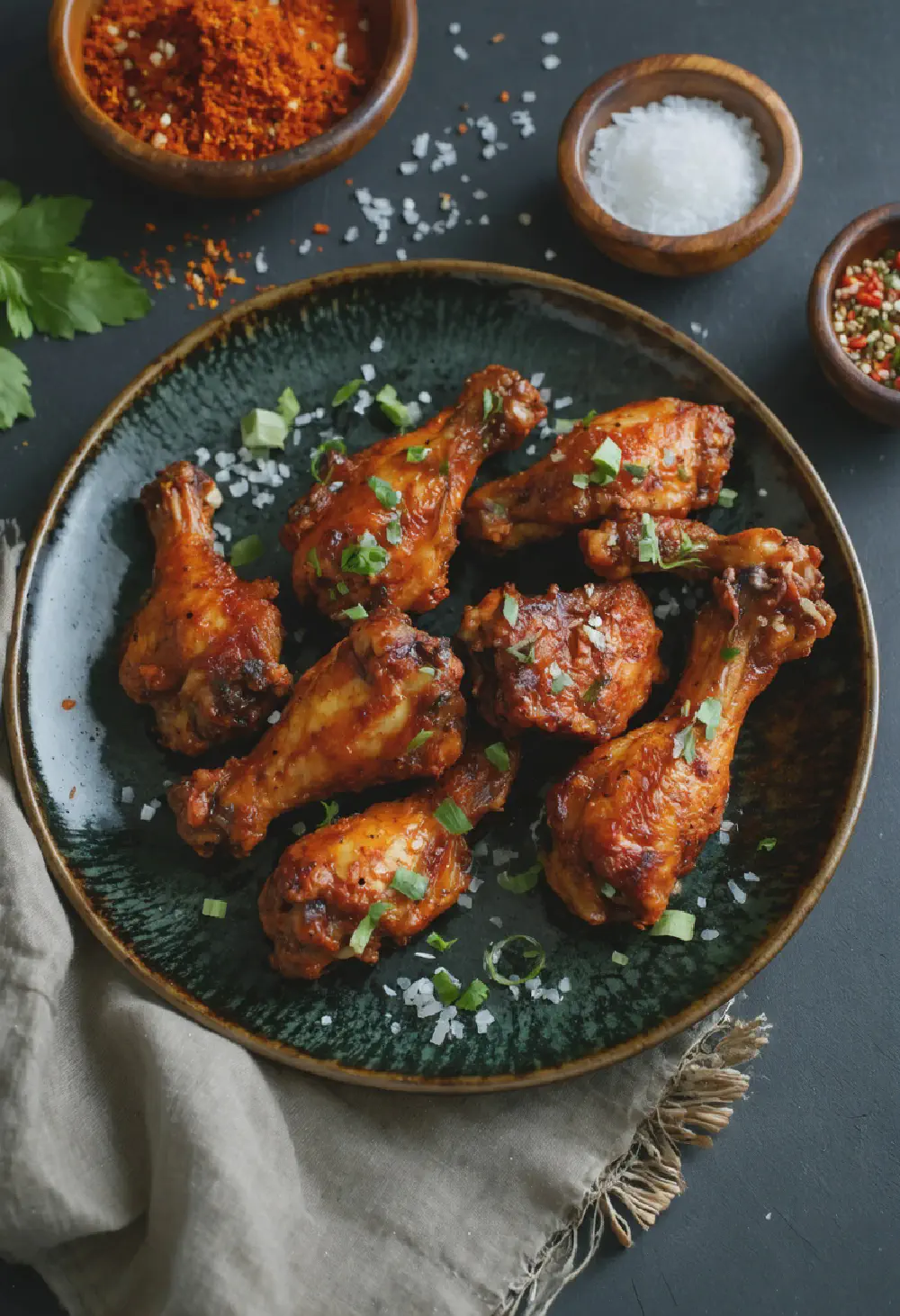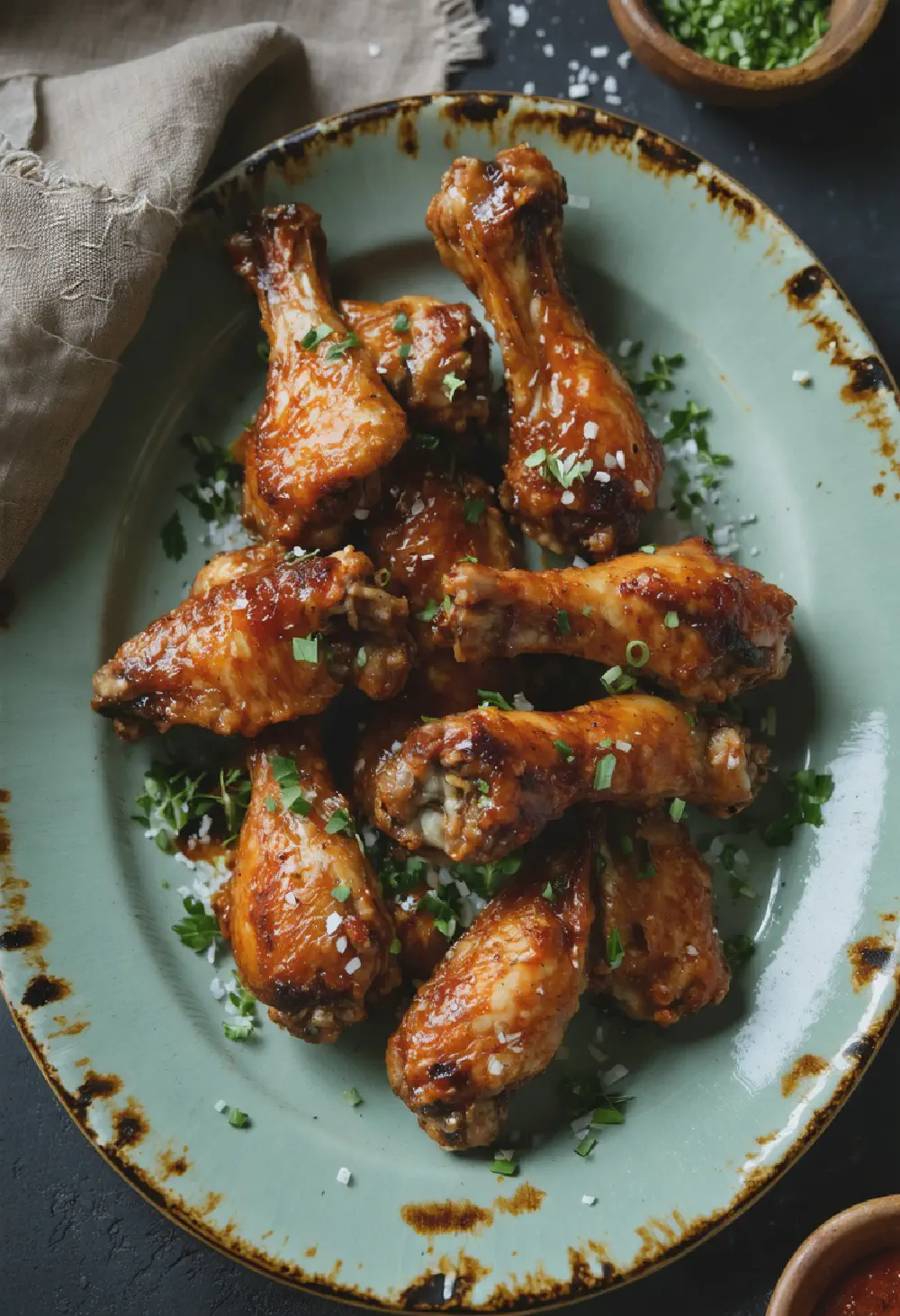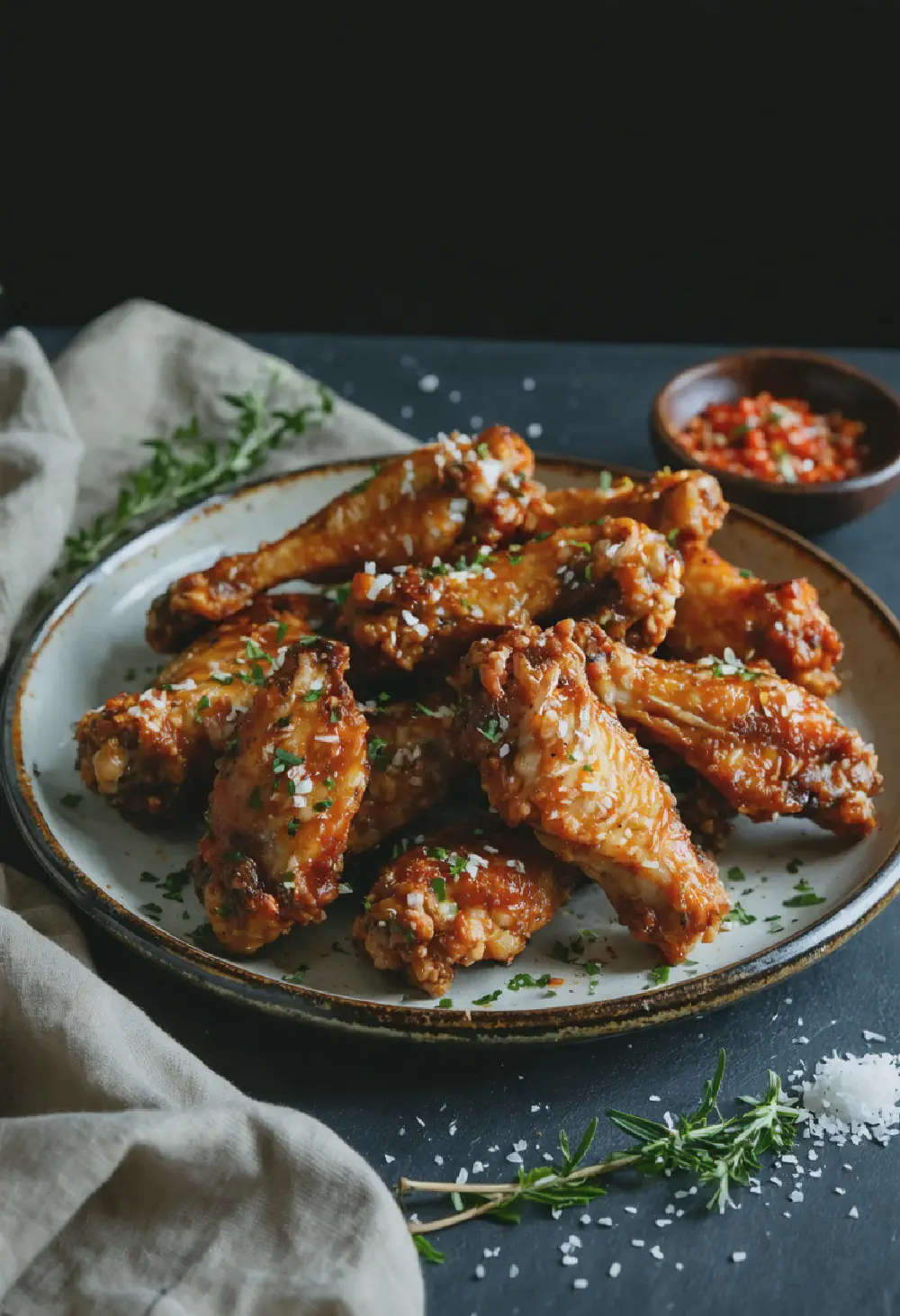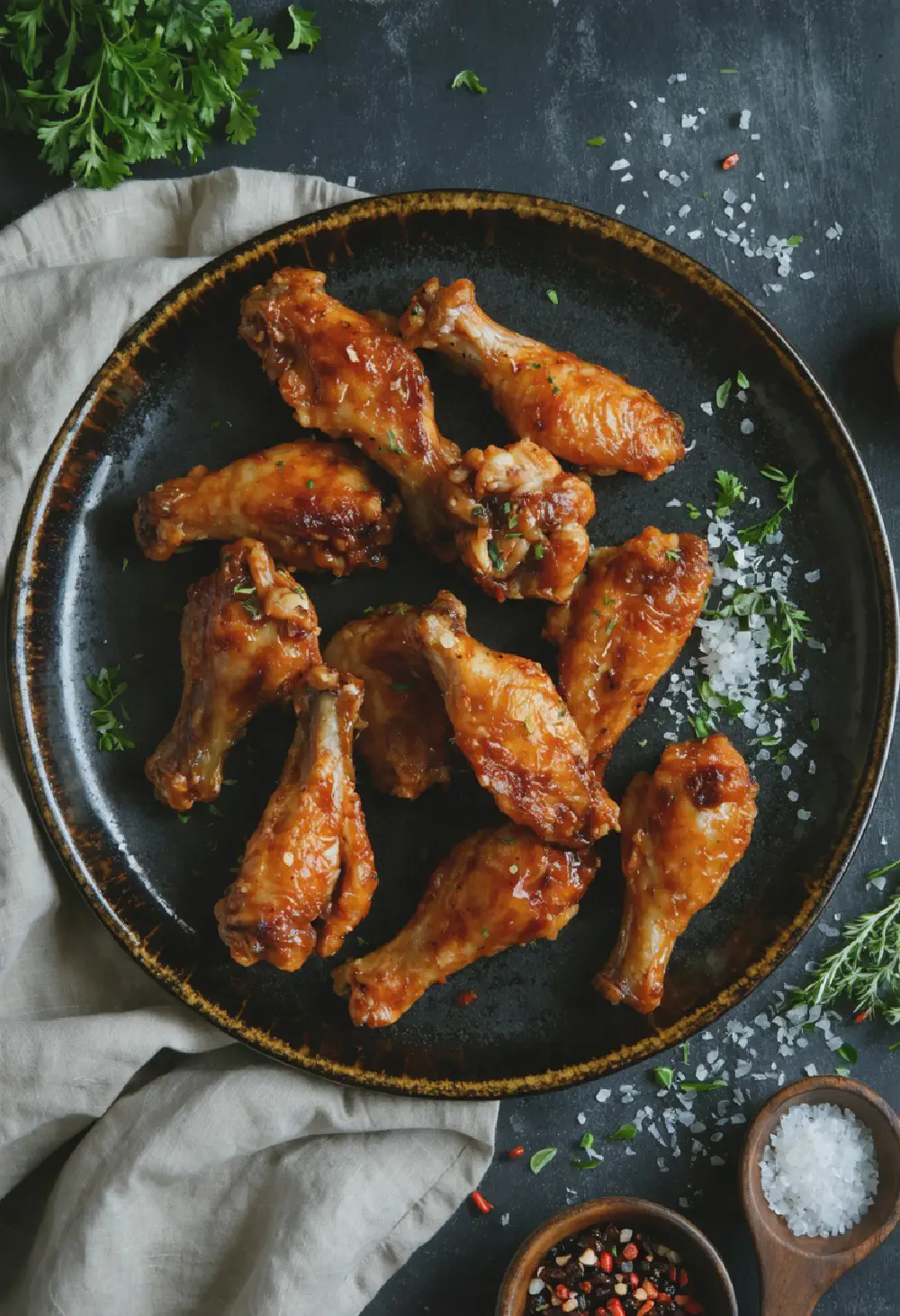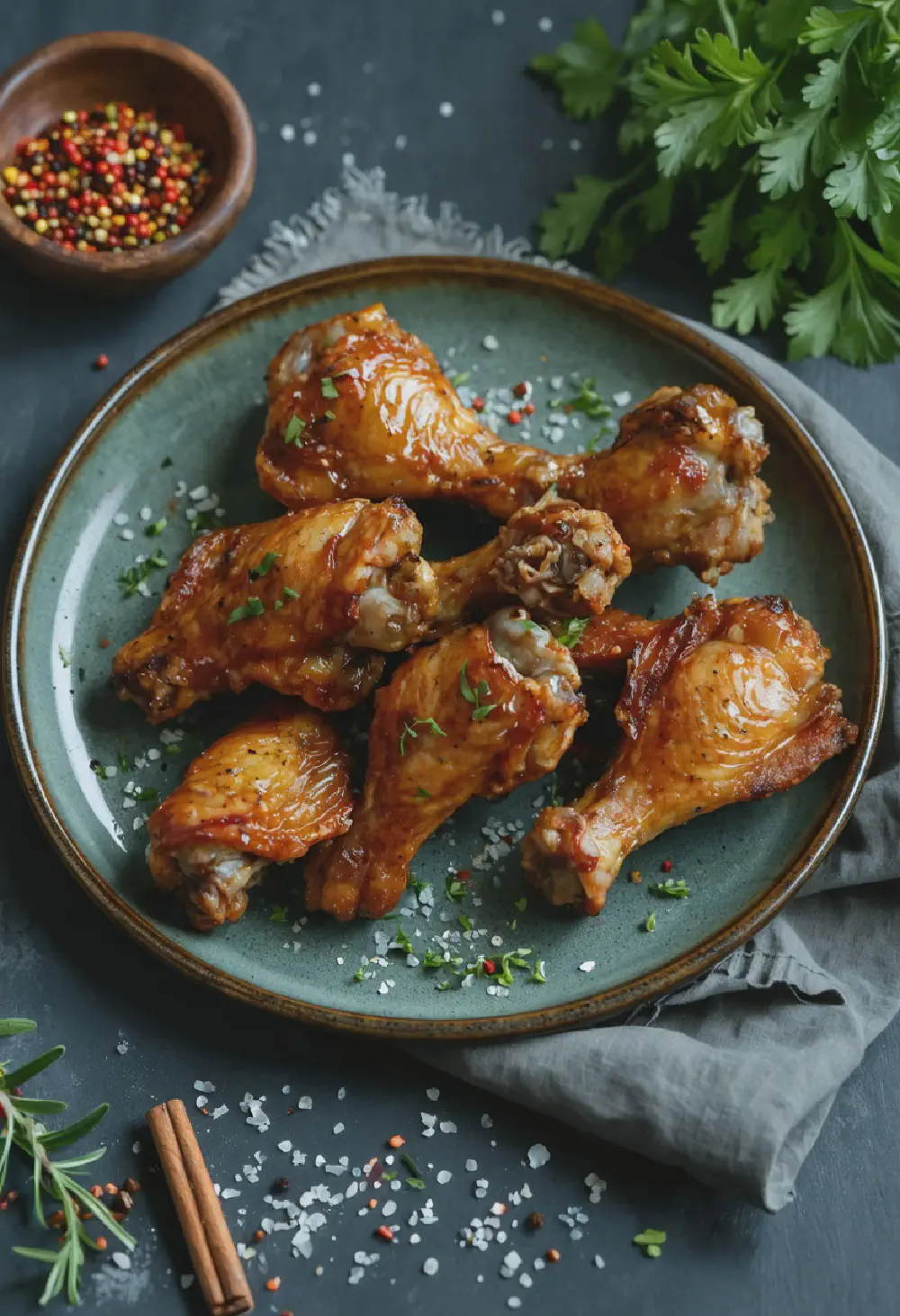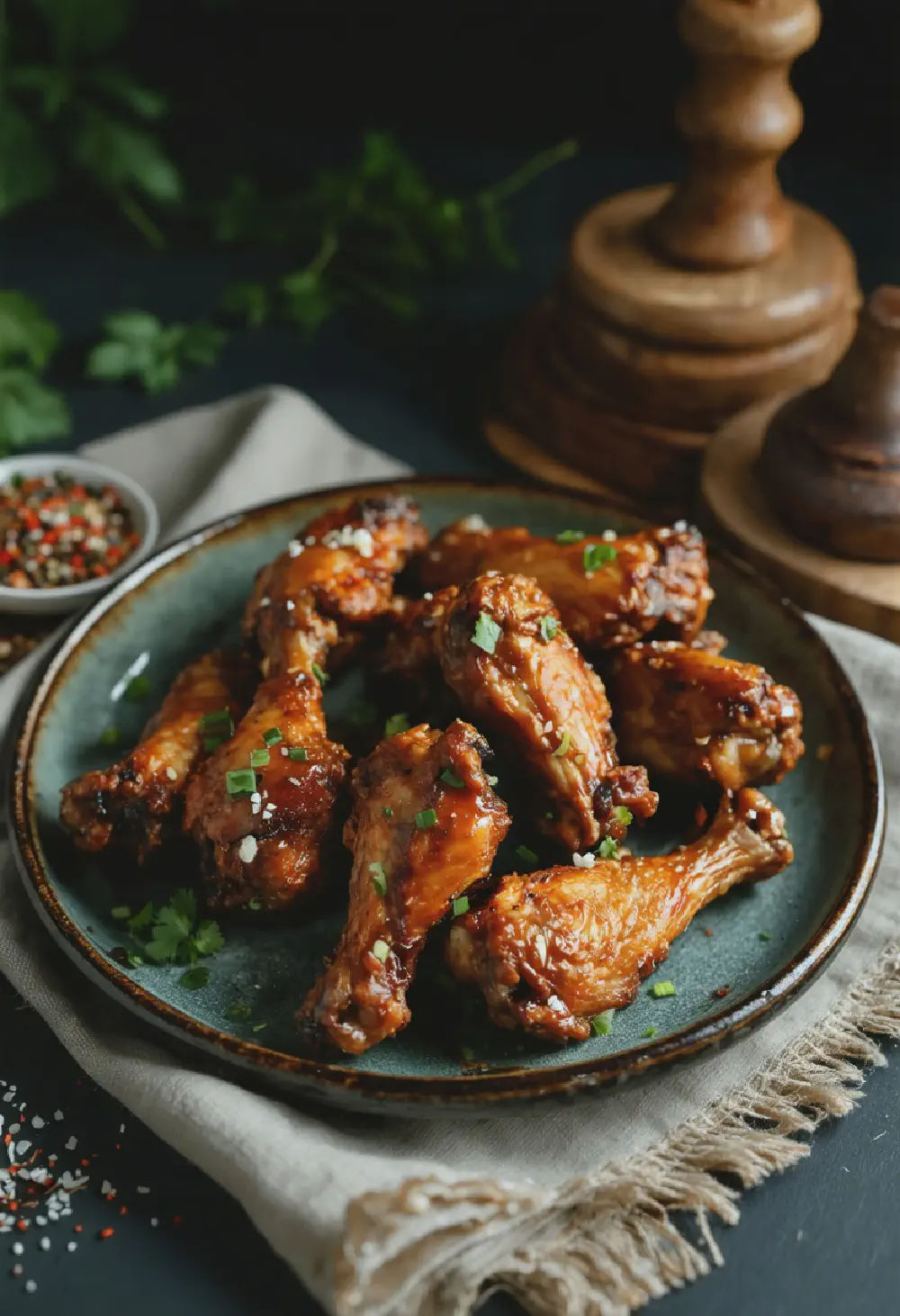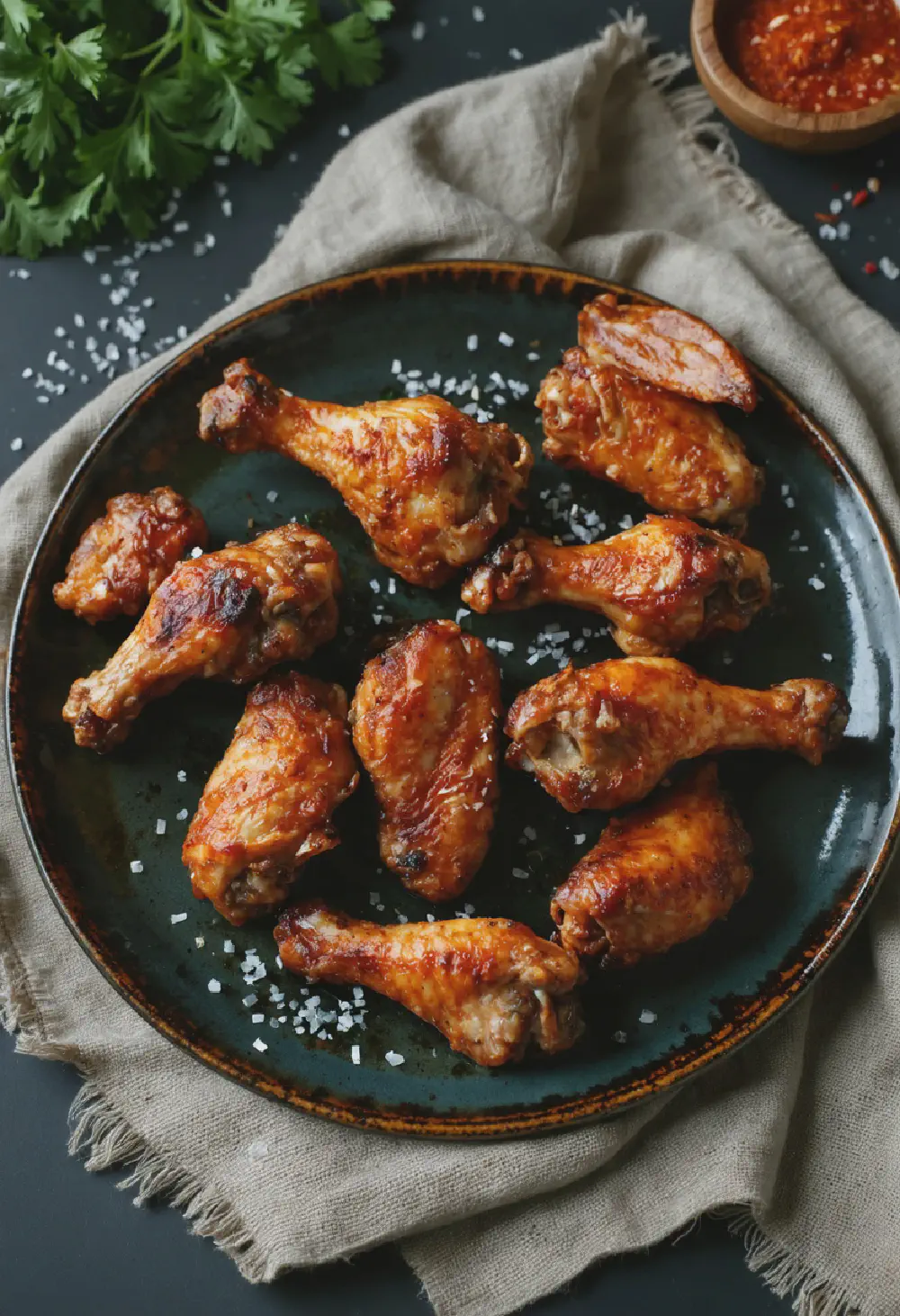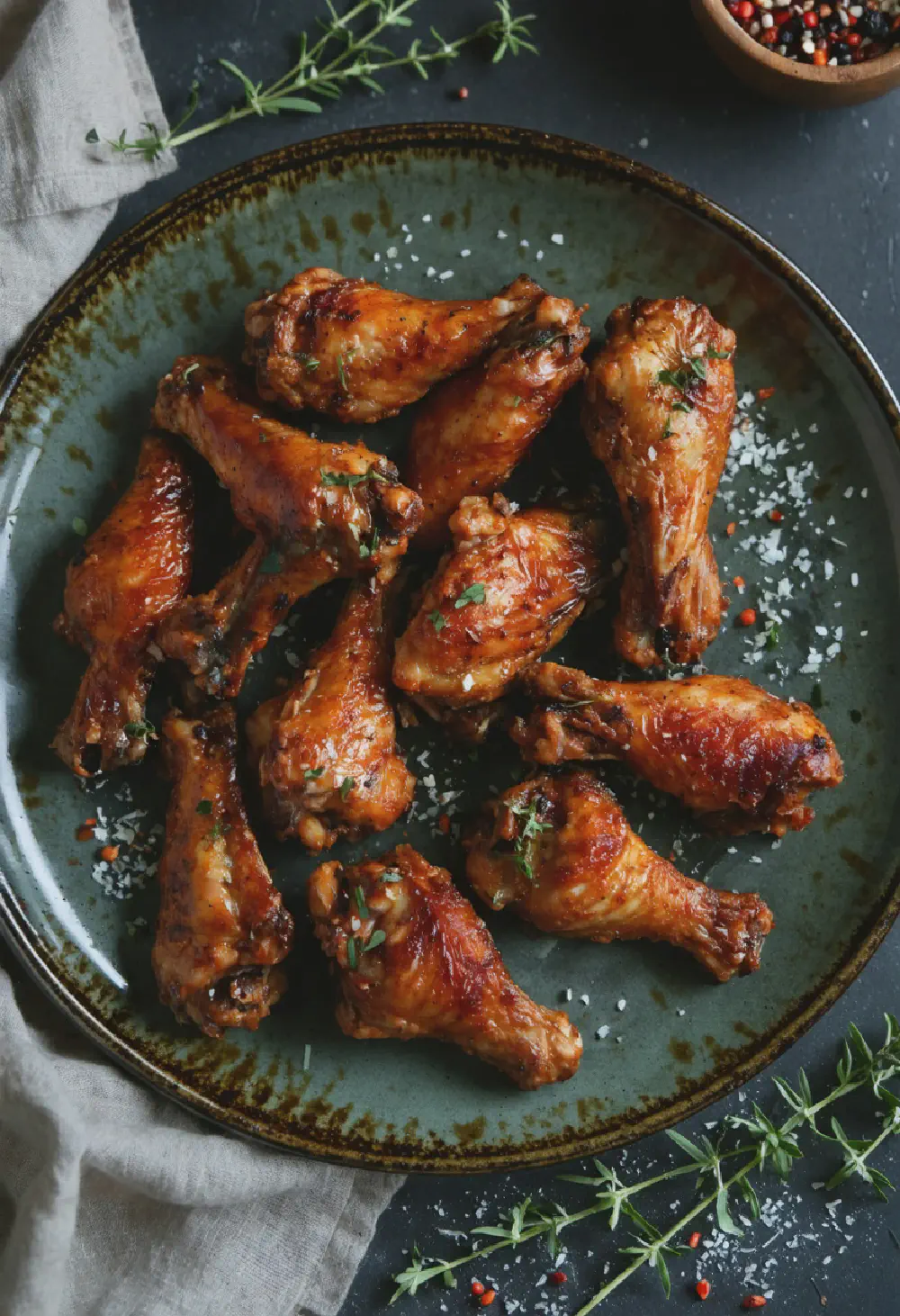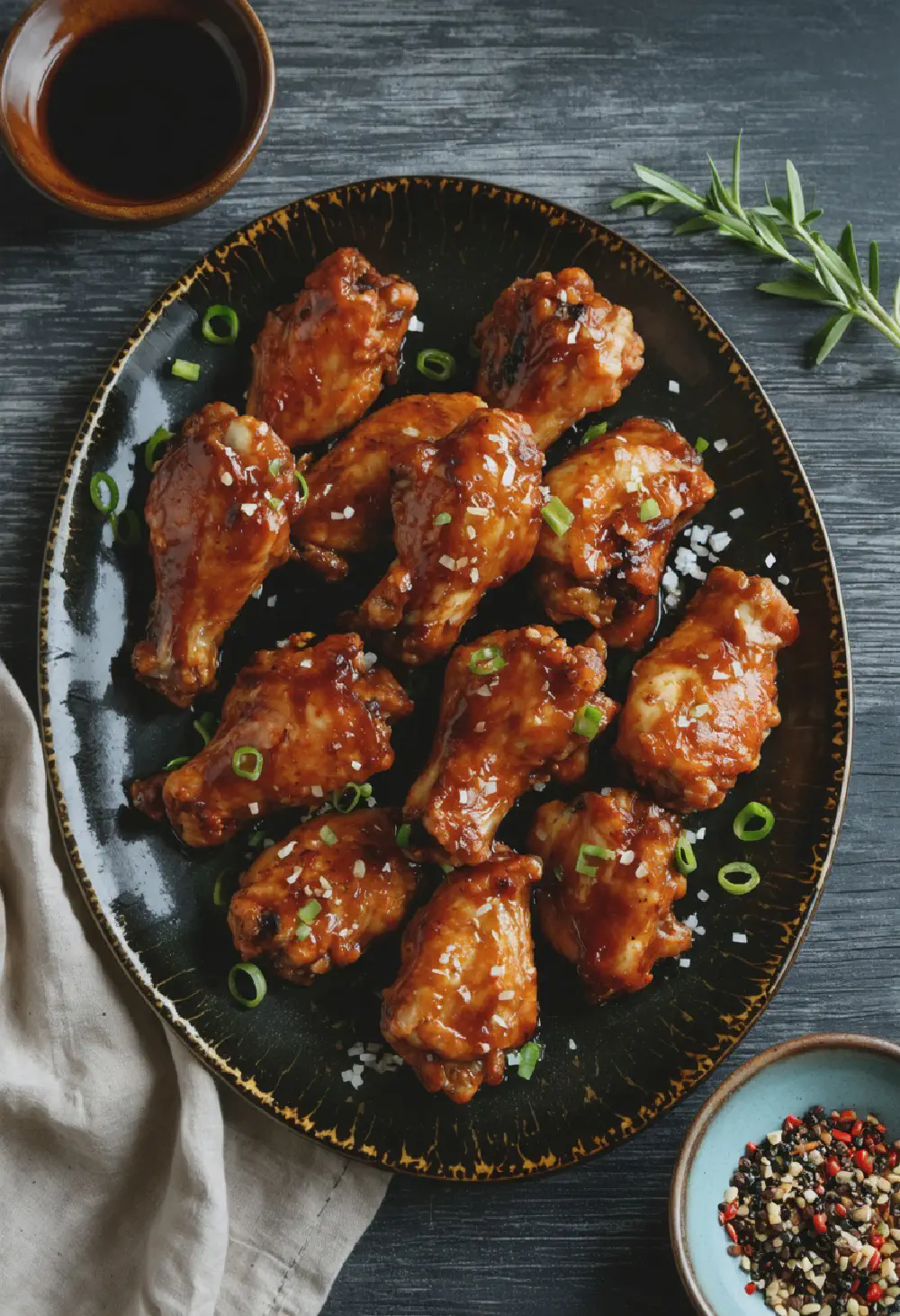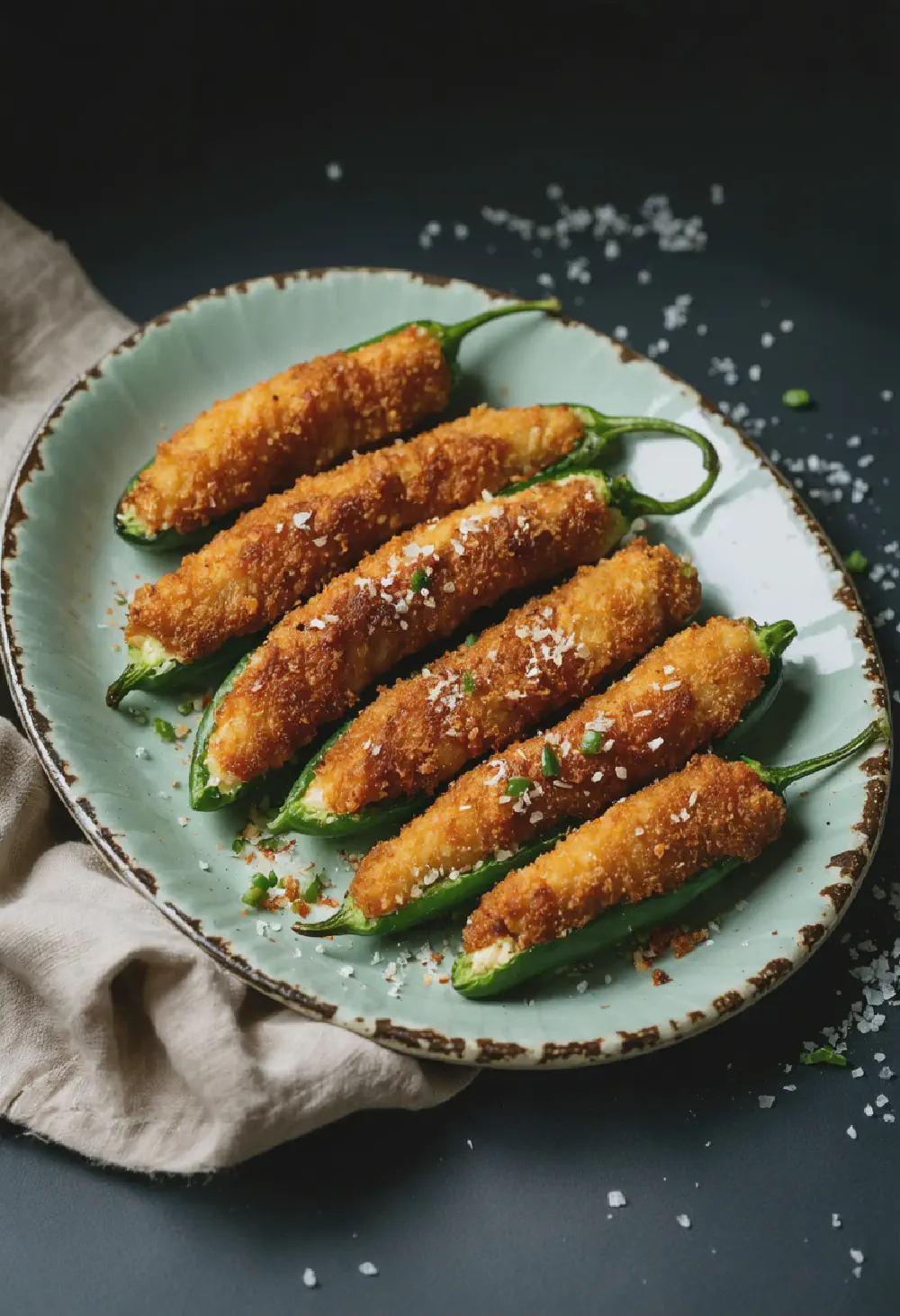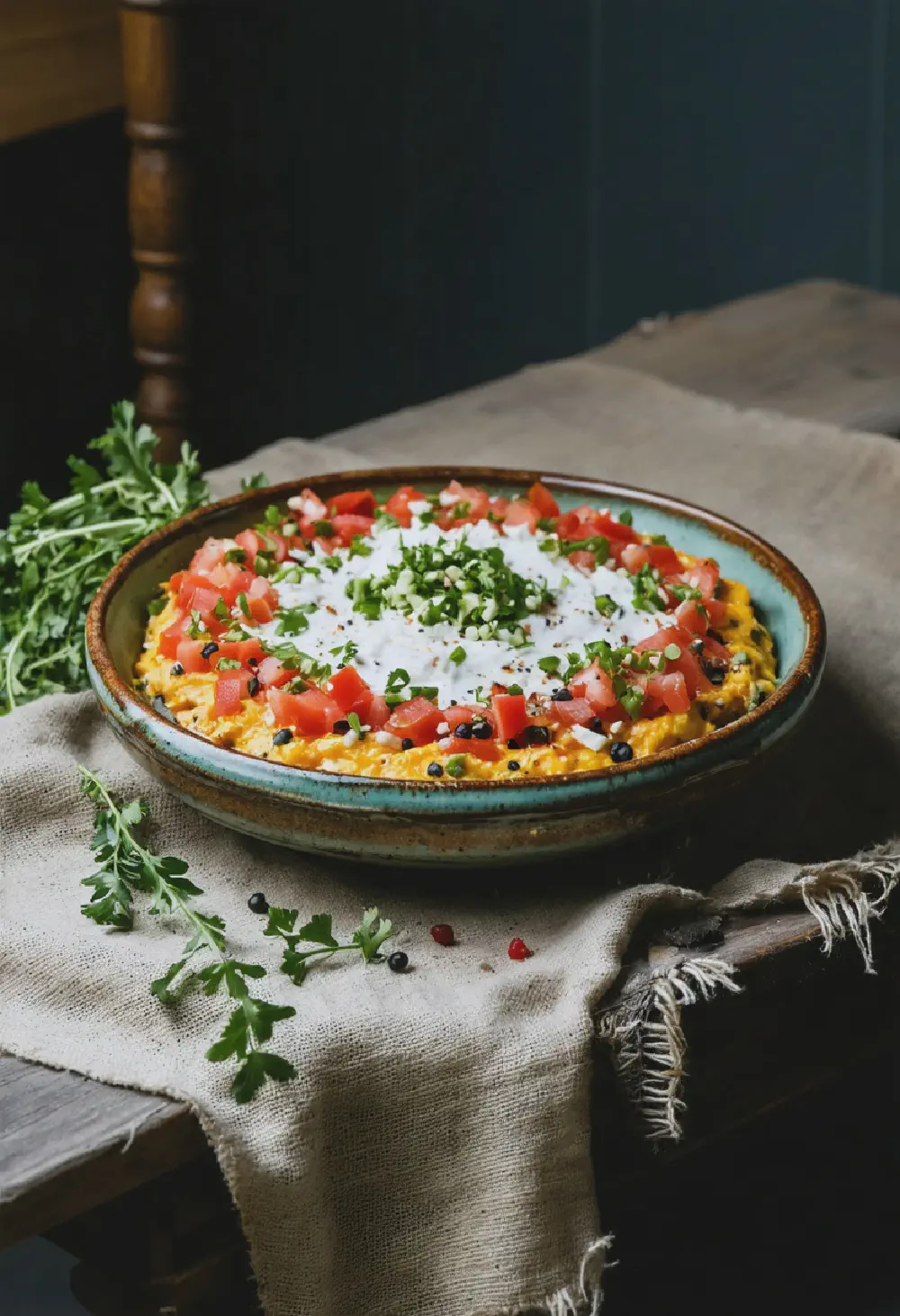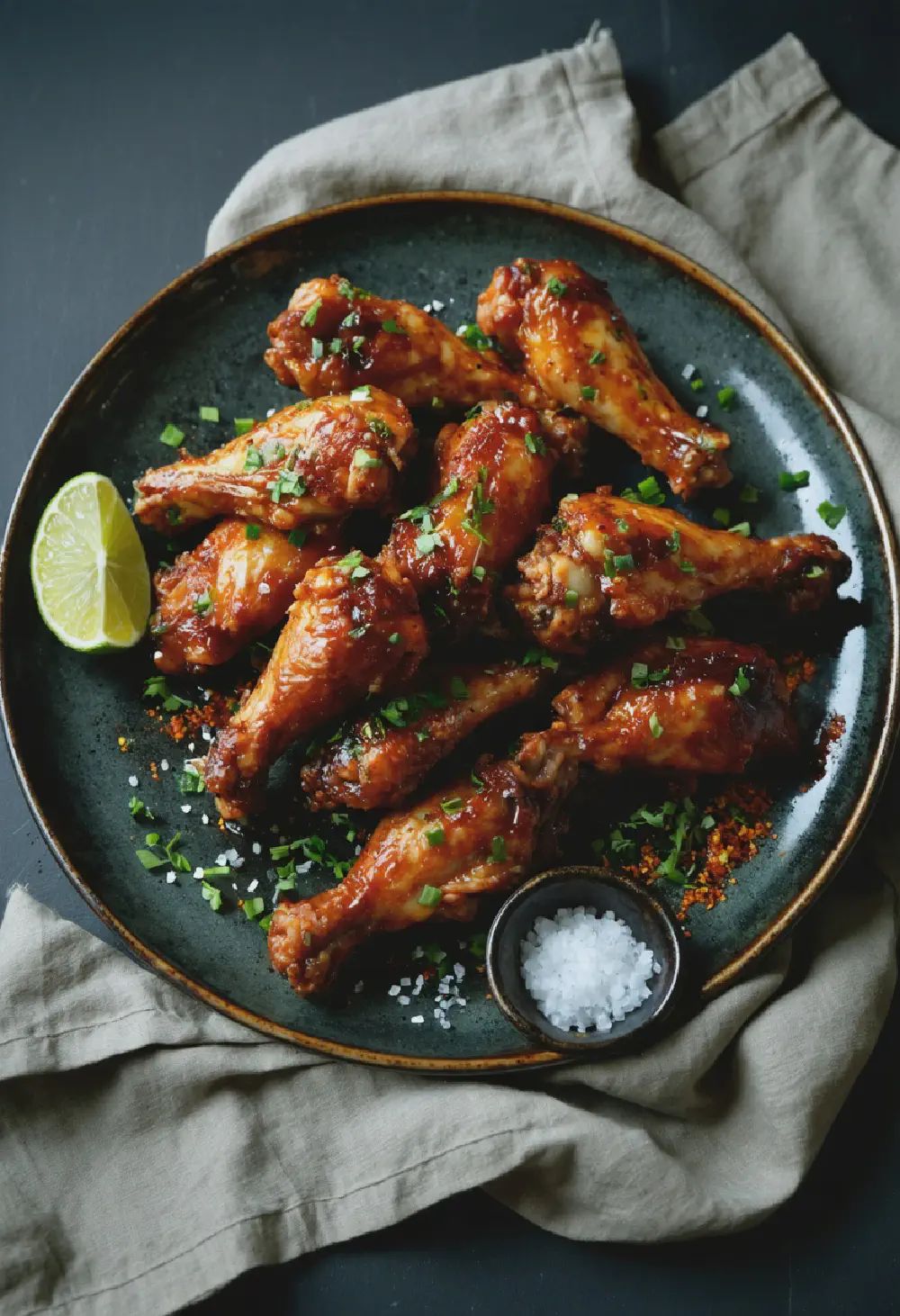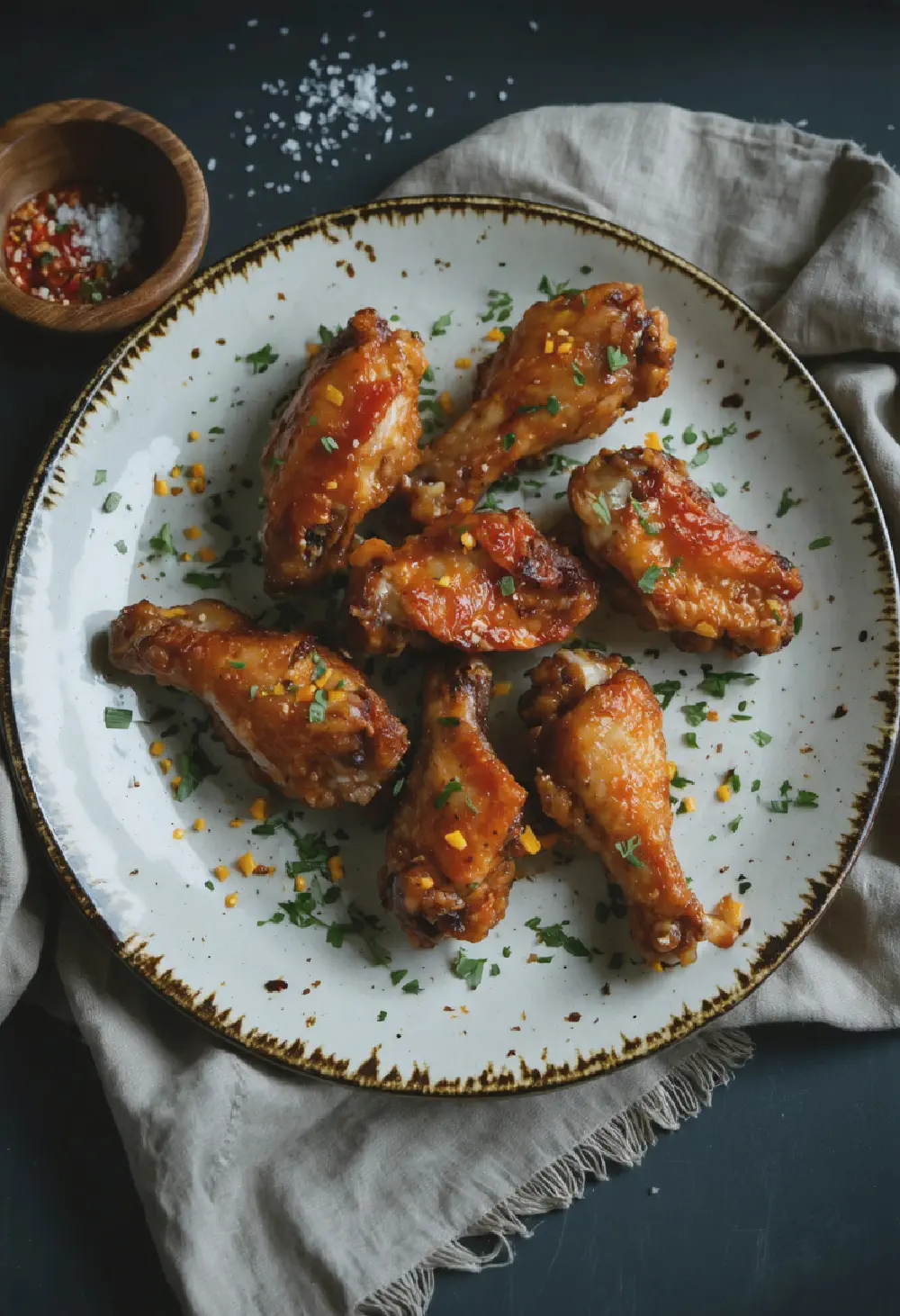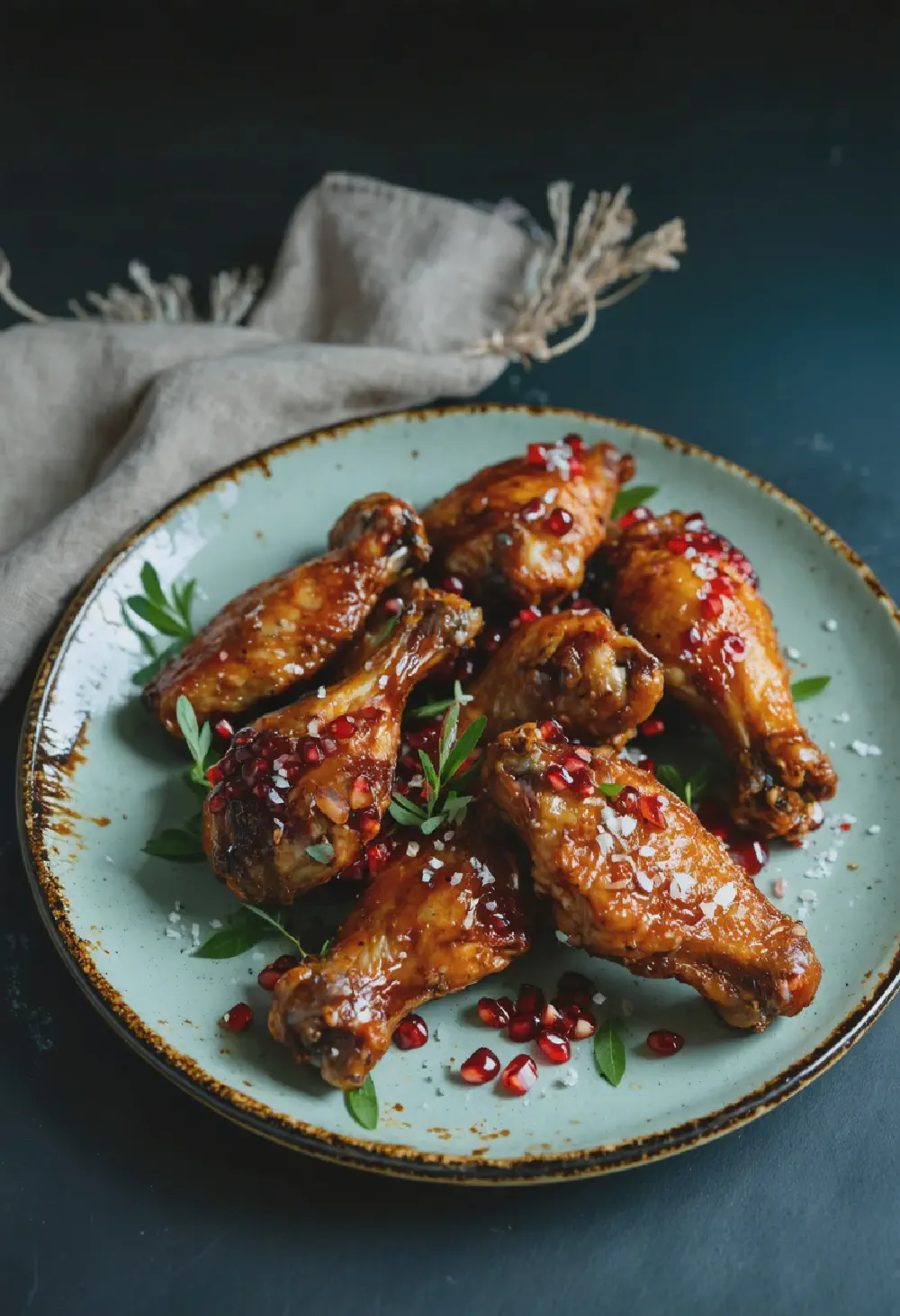Szechuan Spicy Wings
20M
50M
- Makes 4 servings
- 2 lbs chicken wings, split at the joint, tips removed
- 1 tablespoon Szechuan peppercorns
- 2 tablespoons vegetable oil
- 3 cloves garlic, minced
- 1 inch piece of ginger, minced
- 2 tablespoons soy sauce
- 2 tablespoons Chinese black vinegar
- 1 tablespoon Shaoxing wine
- 2 tablespoons sugar
- 1 tablespoon cornstarch
- 2 tablespoons water
- 1 teaspoon sesame oil
- 4-6 dried red chilies, chopped
- 2 green onions, chopped
- 1 teaspoon sesame seeds for garnish
- Toast the Szechuan peppercorns in a dry skillet over medium heat until fragrant, about 2 minutes. Grind them into a fine powder using a spice grinder or mortar and pestle.
- Heat the vegetable oil in a large skillet or wok over medium-high heat. Add the chicken wings and cook until they are golden brown and crispy, about 15 minutes. Remove the wings and set aside.
- In the same skillet, add the garlic and ginger, sautéing until fragrant, about 1 minute.
- Add the soy sauce, Chinese black vinegar, Shaoxing wine, and sugar to the skillet. Stir to combine and bring to a simmer.
- In a small bowl, mix the cornstarch with water to create a slurry. Pour the slurry into the skillet, stirring constantly until the sauce thickens.
- Return the chicken wings to the skillet, tossing them in the sauce to coat evenly. Add the dried red chilies and ground Szechuan peppercorns, stirring well.
- Cook for an additional 5 minutes, allowing the flavors to meld. Drizzle with sesame oil and remove from heat.
- Garnish with chopped green onions and sesame seeds before serving.
Szechuan Spicy Wings: A Fiery Delight from Chinese Cuisine
History
Szechuan Spicy Wings, a tantalizing dish from the heart of Chinese cuisine, trace their origins to the Szechuan province in southwestern China. Known for its bold flavors and spicy dishes, Szechuan cuisine has a rich history dating back over 3,000 years. The use of chili peppers, which are central to the Szechuan Spicy Wings, was introduced to China in the 16th century by Portuguese and Spanish traders. Over time, the Szechuanese people mastered the art of blending these fiery peppers with local ingredients like Sichuan peppercorns, creating a unique culinary experience. Szechuan Spicy Wings have evolved from a regional specialty to a beloved dish enjoyed worldwide, showcasing the province’s flair for spicy and aromatic flavors.
Taste Profile
The taste profile of Szechuan Spicy Wings is a symphony of heat and complexity. The dish is renowned for its intense spiciness, derived from the liberal use of chili peppers and Szechuan peppercorns. The latter adds a unique numbing sensation, known as ‘mala,’ which is a hallmark of Szechuan cuisine. Alongside the heat, the wings are coated in a savory and slightly sweet sauce, balancing the fiery elements with rich umami flavors. Ingredients like soy sauce, vinegar, and sometimes a touch of sugar contribute to the depth of flavor, making each bite a delightful explosion of taste. For spice lovers, Szechuan Spicy Wings offer an unforgettable culinary experience that is both challenging and rewarding.
Cultural Significance
Within Chinese cuisine, Szechuan Spicy Wings hold a special place, reflecting the bold and adventurous spirit of Szechuan culinary traditions. The dish is more than just a meal; it’s a celebration of the region’s love for spicy food and its mastery of flavor combinations. In Szechuan culture, spicy food is believed to have health benefits, such as improving circulation and aiding digestion, which adds to the dish’s significance. Szechuan Spicy Wings are often enjoyed during social gatherings and festive occasions, symbolizing warmth and hospitality. They also represent the province’s culinary innovation, as chefs continually experiment with new ways to enhance the dish’s flavor profile. As Szechuan cuisine gains global popularity, Szechuan Spicy Wings serve as an ambassador, introducing people worldwide to the vibrant and dynamic world of Chinese flavors.
